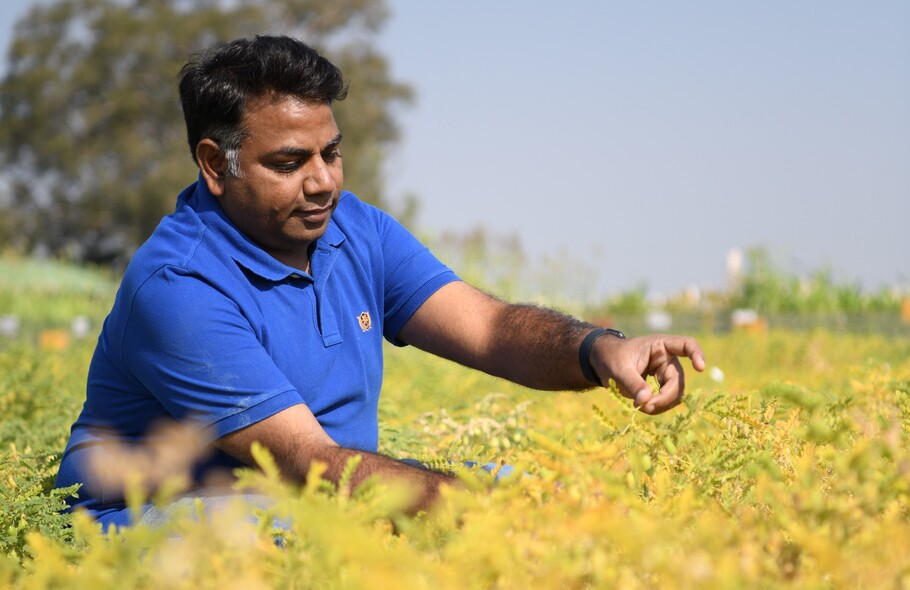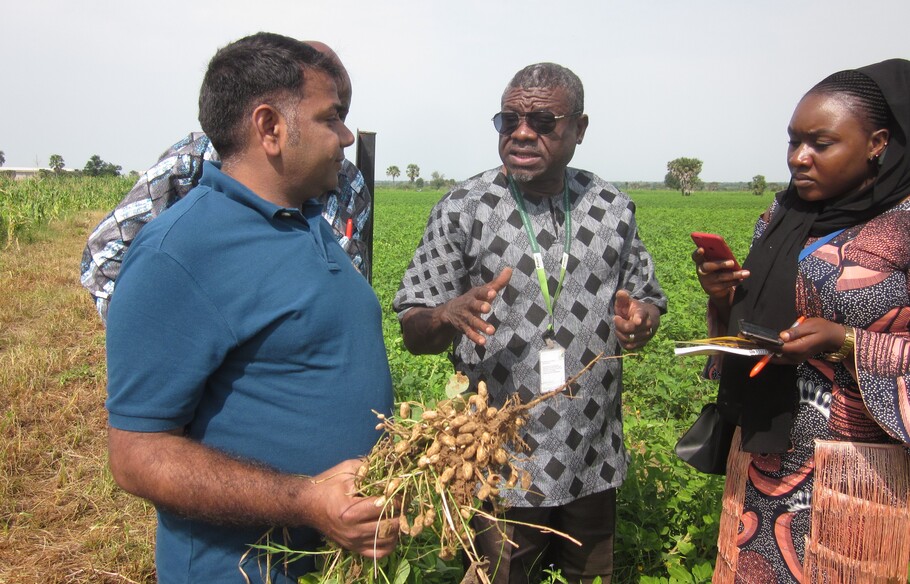
We need foreign tie-ups for better research: Agri-scientist Rajeev Varshney

The best Indian agricultural universities and institutes should exchange scientists with top-rated institutions abroad, and they should collaborate in research, teaching, and curriculum design. Research must be time-bound, and risk-taking should be encouraged for innovation to happen, said Rajeev Varshney, an expert in genomics, genetics, and molecular breeding, in a Zoom interview with The Federal upon being elected Fellow of the Royal Society, London.

About Rajeev Varshney
Varshney is among 59 fellows elected this year to the UK’s national academy of sciences, which claims to be the oldest science academy in continuous existence. He is currently Director, Centre for Crop and Food Innovation, Murdoch University, Australia. Two other persons of Indian origin, Sourav Chatterjee, Professor of Statistics at Stanford University, and Madan Babu Mohan of the department of structural biology, St Jude’s Children’s Research Hospital in the US, also share the honour.
Previous Indian fellows from the field of agricultural sciences are Benjamin Peary Pal, the first director-general of the Indian Council of Agricultural Research, who was known for his work on rust resistance in wheat, MS Swaminathan, the architect of India’s Green Revolution, and Gurdev Singh Khush, who released blockbuster rice varieties while at the International Rice Research Institute, Manila.
Varshney is also a highly cited scientist with an H-Index of more than 100, according to Google Scholar. After graduation and post-graduation in botany from Aligarh Muslim University, he obtained a PhD from Chaudhary Charan Singh University, Meerut. In 2005, he joined Icrisat, an international agricultural research organisation based in Hyderabad. In 2021, the team of researchers from 41 organisations led by him published the pan-genome sequences of 3,366 chickpea or chana lines from 60 countries. It identified 29,870 genes, including 1,582 previously unreported novel genes. Based on that, four drought-tolerant and four fusarium wilt-resistant lines were released with yield improvement of 10–20%. More releases will follow as breeders can freely use the genomics information publicly available.
Also read: Palatability, shelf life key factors in boosting millet consumption: Scientist
The big picture
“I like to look at the big picture, not do genome sequencing in bits and pieces. We look at the problem and address that problem with what kind of research frame we need to develop,” Varshney said.
Another important work was the re-sequencing of the genomes in 2017 of 292 lines of pigeon pea or tur by a team of 19 scientists headed by him. It discovered the traits that confer resistance to fusarium wilt and sterility mosaic diseases. It also identified the gene that make the plant insensitive to length of day, which makes it suitable for cultivation in many agro-climatic zones.
In 2020, Varshney’s team of researchers at Icrisat discovered that temperature regulates the viability of pollen in pigeon pea, and that at certain stages of pollen development it becomes male sterile at 24 degrees Centigrade or above and male fertile below that. This is important for cross-pollination in pigeon pea which is self-pollinating, which means one flower has both sexual organs. To make pigeon pea hybrids, conventionally, three lines are needed: male sterile or A line without viable pollen, so that it can be fertilised with the pollen of another plant with desirable traits. A male sterile maintainer of B line to make many copies of male sterile plants. And a male fertility restorer or R line to restore male fertility after cross pollination is done. The discovery that temperature modulates male sterility cuts down the number of lines needed for pigeon pea hybridisation to two. But this is still work in progress. What has been done in the laboratory has to be scaled up in actual field conditions.
Another important piece of research by the Genetic Gains research programme that Varshney headed at Icrisat was the release in 2019 for commercial cultivation of two high oleic oil groundnut lines, Girnar 4 and Girnar 5, after eight years of effort. Normal groundnut has 40–50 per cent oleic oil, which is good fat. In Girnar 4 and Girnar 5, 80 per cent of the fatty acids are oleic.
Also read: Sugarcane turns bitter for farmers; academic math doesn’t work on field
Need for training abroad
Varshney agreed with the observations of Deepak Pental, former vice-chancellor of Delhi University, in the journal ‘Dialogue’ of the Indian Academy of Sciences, that India has inadequate competency in the areas of genomics, gene discovery, plant-pathogen interaction, genome editing, genetic engineering, livestock genetics and genomic selection in crops and livestock. He agreed with Pental that the Agricultural Scientists’ Recruitment Board (ASRB) should recruit talented students from diverse backgrounds, rather than confining its intake to agricultural institutions. He endorsed Pental’s suggestion that about 200 students with MSc and MTech degrees should be selected at the national level for training in the best laboratories abroad for doctoral degrees to develop competency in areas like big data, statistical genomics and bioinformatics. He agreed that a certain proportion of scientific positions at the Indian Council of Agricultural Research (ICAR) should be filled through lateral entry. (Pental is also the developer of genetically-modified mustard which the government approved for commercial cultivation last year).
Varshney said China, which has a large public research system in agriculture like India, had encouraged its scientists to train abroad. India must do likewise. We have the talent, he said, but it needs better training. Chinese scientists with laboratories abroad are encouraged to set up similar facilities in China, Varshney said.
As for research funding, Varshney gave the example of Australia, where one per cent of agricultural export profits are sequestered for research, with the government giving a matching grant. This fund is administered by the Grains Research Development Corporation. Growers decide the priorities for research, which is outsourced to private companies. These companies own the germplasm and intellectual property. Perhaps, this is a model India could follow.
Why India should help African countries

Regarding the National Agricultural Higher Education Project (NAHEP), initiated in 2018 with a soft loan from the World Bank and the government contributing equally, Varshney said the intention is good, but ICAR, which is the coordinating agency, needs to work on the implementation aspect. NAHEP seeks to upgrade the syllabi and make remote learning possible through digitalisation of classrooms and libraries.
Varshney said Indian agricultural universities should tie up with top-class institutes like Cornell, Purdue, Murdoch, and UC Davis, involve them in developing the curricula and integrate them in their systems. NAHEP provides for sending scientists abroad. The money is given to various universities, but the selection of scientists should be strictly on merit. Instead of short visits of one of two months, Indian universities should send a team of scientists for a length of time, followed by another team, and the research collaboration should continue even after they return.
Varshney also make a pitch for India to help African countries agriculturally, particularly with research in so-called orphan crops like finger millet, sorghum, yam, tapioca, and sweet potato, which are nutritious, resilient to climate change but get very little research unlike crops of interest to multinational corporations like rice, wheat, and maize. He said China is ahead in this aspect because of which its scientists get positions at the United Nations, which are decided based on votes. India should help Africa achieve the UN Sustainable Development Goal of zero hunger by 2030. It should help not only with genome editing and genetic engineering research but also with agronomy and food processing. This will enable it to earn political mileage as well.


